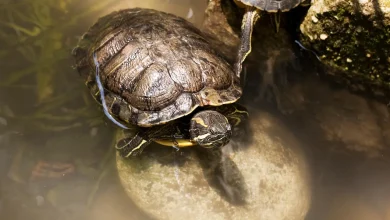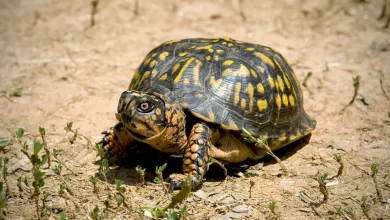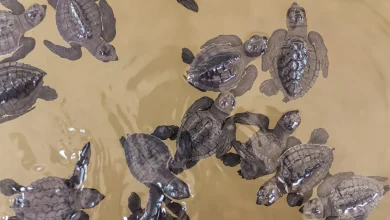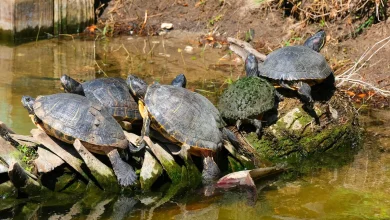Box turtles have unfortunately seen better days in the wild. Various factors, most of them human-related such as exports for the pet trade and loss of habitat are causing the population of box turtles to dwindle. Because of this, it’s important to know about the threat and what we can do to reverse it.
Table of Contents
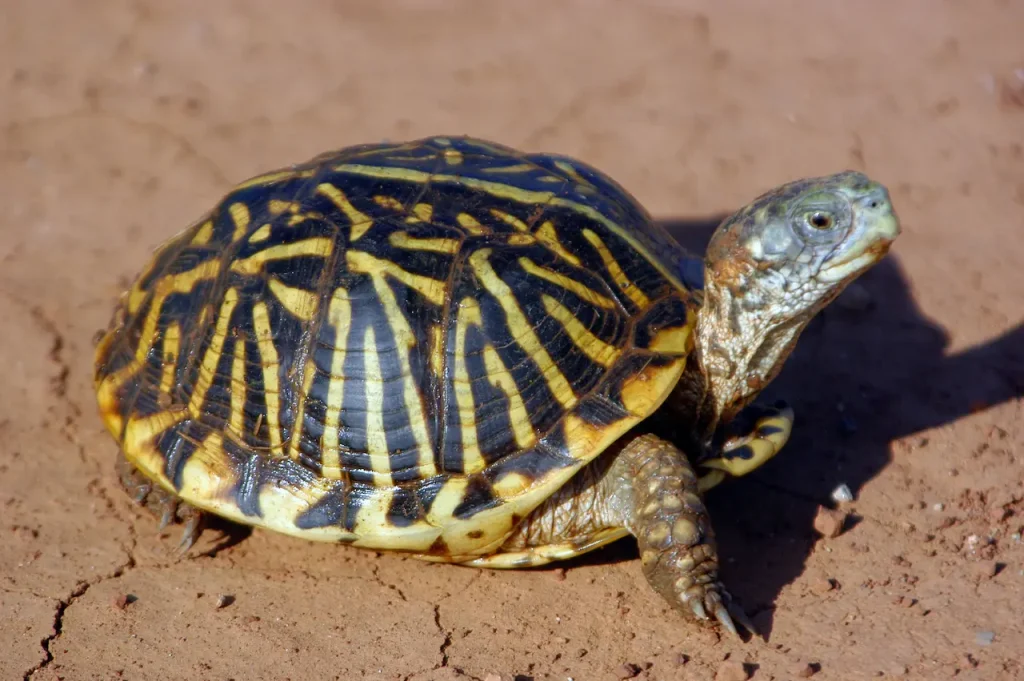
Most Threatened Species/Subspecies
Some species and subspecies of box turtle have not been studied very heavily, but it is possible that the Coahuilan (Aquatic) box turtle, is the most endangered American box turtle. Several Asian box turtles are near extinction or already extinct in the wild.
Even the most common box turtle, the Eastern box turtle, is officially classified as “vulnerable.”
Some box turtles require more study before their endangered status can be determined, such as the Spotted box turtle. Only a low number of these turtles have ever been found spread across a large distribution area.
Ways Individuals Can Harm Box Turtles
First and foremost; humans need to learn how their actions can inadvertently harm box turtles. You see, Box turtles existed fine without us for a very, very long time. The best thing we can do to help is to stop interfering in negative ways; this alone will make a huge difference.
The first thing to understand is that box turtles have a profoundly strong connection to the location they are born. They rarely travel far from where they were hatched. Once they form a connection to these surroundings, they stay there for the duration of their life (if allowed).
Removing a wild box turtle from their home causes stress for them. Box turtles that were born in the wild and were later put into captivity tend to have a much shorter life span. Worse than this; some people take box turtles from their homes and then release them elsewhere into the wild. Box turtles will not simply settle down in a new location if moved. More often than not, they will wander; hopelessly trying to find their old home until they die. It’s not too uncommon for humans to take in box turtles for a few weeks, and then later decide to let them go. It’s best never to remove a box turtle from their home unless you have a good reason. And if you return them to the wild, it must be in the same spot you took them from.
If you want a box turtle as a pet, it is recommended that you always buy one that was bred in captivity to begin with. Giving money to people who capture them from the wild only encourages them to keep doing it.
A study in Louisiana found that 30,000 box turtles were taken from the wild over 41 months. It’s believed that half of all box turtles taken from the wild quickly die due to poor living conditions and during transport.
If you do take a box turtle as a pet (preferably one bred in captivity) do plenty of research in advance to know exactly what its needs are. This website is a great place to start. Another great resource to follow is Reptile. Guide. The experts at Reptile. Guide specializes in not only creating care information about turtles, but other reptiles as well, such as snakes, lizards, and even tortoises.
As a whole, box turtles are a bit harder to care for than dogs or cats because they haven’t been as domesticated yet. You owe it to your turtle to be a good owner. Don’t just wing it; do your homework.
Beyond that, you can help box turtles by following basic common courtesy towards nature. Never litter when you’re out camping (or at all, really).
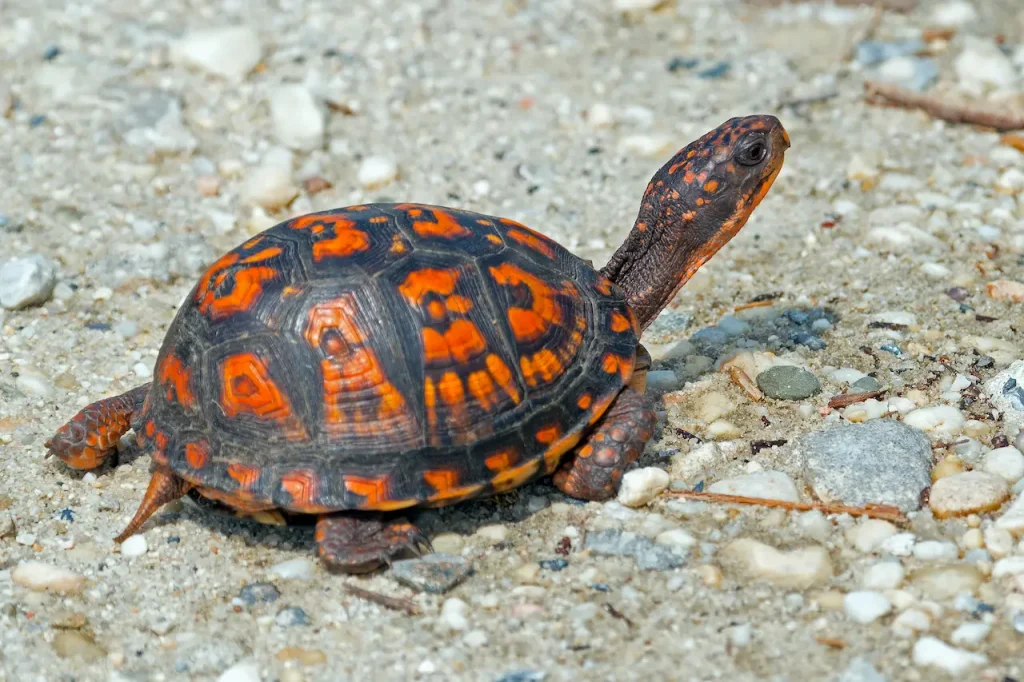
What You Can Do to Help
Box turtles tend to thrive best when we just leave them alone. That being said, there are some situations in which you can help them.
One such example is if you find a box turtle crossing a road. This is a slow process for them, and they often get hit. If you feel you can help them in a manner that is safe for both yourself and other drivers; you can save their life by moving them out of the road.
If you live in an area with a lot of wild box turtles, keep an eye out for them on the road so you don’t hit them yourself.
Occasionally, people will discover that box turtles have started nesting in their backyard. Turtle eggs can be an easy target for predators like raccoons, but you can help protect them. Turtle nests can be safeguarded quite easily with a dome of chicken wire. Just make sure that there are some two-inch gaps at the base of the structure. These gaps will be large enough that the hatchlings can easily slip through them; so the hatchlings can leave the nest but no predators can enter it. You may form a connection to these hatchlings by the time they come out. Resist the urge to keep them as pets, even briefly.
If you have turtles on your property there are some things you can do to make the habitat as favorable as possible to them. This includes leaving leaf litter and fallen woody debris on the ground (at least in some areas and if forested areas), to avoid burning large areas during peak activity times for turtles and thoroughly check your yard before mowing or burning brush piles. You can read more about how to create a more suitable habitat for box turtles here.
If you have pets, make sure that they don’t interfere with the nest.
You can also help box turtles by spreading information. People need to know that they can accidentally kill a box turtle as easily as by picking it up, showing it to their camping buddies; and setting it down in a different place than they found it.
Organizations
Many organizations help protect box turtles; most of them are locally based and deal with protecting the box turtles within their area. You can quickly check online to see if there are any in your area.
Box turtle research is being conducted by professionals, but they do need help from volunteers sometimes. A common task given to volunteers is to find and safely secure box turtles that you find in the wild. They will then have you bring in the specimen, at which point they will be tagged by a professional. The turtle will then be released back into the wild, in the same place it was taken from.
By tagging and releasing turtles, scientists can monitor them and get a better idea of how they can be saved.
Local organizations may also have other simple tasks for you, such as signing petitions to help prevent exporting North American box turtles from their homes or using them as food.
